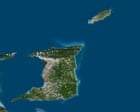(NEXSTAR) — Earth’s atmosphere is about to be struck by expelled solar material, federal forecasters have warned, which means some in the U.S. may soon see the northern lights.
The expected celestial activity will be sparked by coronal mass ejections (CMEs), which were hurled out by the sun over the weekend, interacting with our atmosphere, NOAA’s Space Weather Prediction Center (SWPC) explains.
CMEs are explosions of plasma and magnetic material from the sun. When that material collides with Earth’s magnetic field, various activities can occur. While that can result in impacts to our infrastructure and communications, the most likely outcome of the CME interactions that you’ll see is the northern lights.
The strength of the activity — known as a geomagnetic storm — will influence how strong and how far south the northern lights are visible.
Forecasting has shifted slightly throughout the week and, as of Thursday, forecasting suggests the strongest storming is expected overnight and into Friday. Conditions could reach minor G1 levels and potentially even G2 levels, the SWPC reports, prompting a geomagnetic storm watch through Thursday.
The SWPC uses a 5-point scale to measure the strength of geomagnetic storms, much like forecasters use scales for tornadoes and hurricanes. A G1-level storm is capable of bringing the northern lights to northern Michigan and Maine, while G2 storms have been known to spark the aurora as far south as New York and Idaho.
The map below shows how far south the northern lights may reach on Thursday. Areas in red have the highest likelihood of seeing the aurora, while those in green have the lowest likelihood. Regions at or just below the red view line may catch a glimpse of the northern lights along the northern horizon.
Alaska and Canada will, as usual, have the greatest chance to see the northern lights on Thursday. Within the continental U.S., the SWPC predicts those in parts or all of 15 states — Washington, Oregon, Idaho, Montana, Wyoming, North Dakota, South Dakota, Minnesota, Iowa, Wisconsin, Michigan, New York, Vermont, New Hampshire, and Maine — also have a chance (albeit a slimmer chance) at seeing the northern lights.
Should the geomagnetic storm strengthen, those in Nebraska, Illinois, Indiana, Ohio, and Massachusetts could see an auroral glimmer.

Whether or not you see the northern lights will also depend on timing.
According to the SWPC, geomagnetic storm conditions could reach aurora-producing strength between 2 p.m. ET Thursday and 2 a.m. ET Friday. Activity could peak between 5 p.m. ET and 8 p.m. ET, which means the setting sun could dull out any northern lights in some areas.
Forecasting for Friday largely limits any chance to see the northern lights to Alaska and Canada.
When the northern lights forecast is weaker, it’s often recommended to get as far away from outdoor lights as possible and look northward. Even then, you may only be able to see the northern lights by taking a picture with your phone.
The SWPC has also warned of “minor – mainly manageable effects to some technological infrastructure.” As daunting as that sounds, infrastructure managers faced even stronger geomagnetic storming late last month, and you likely didn’t even notice.














